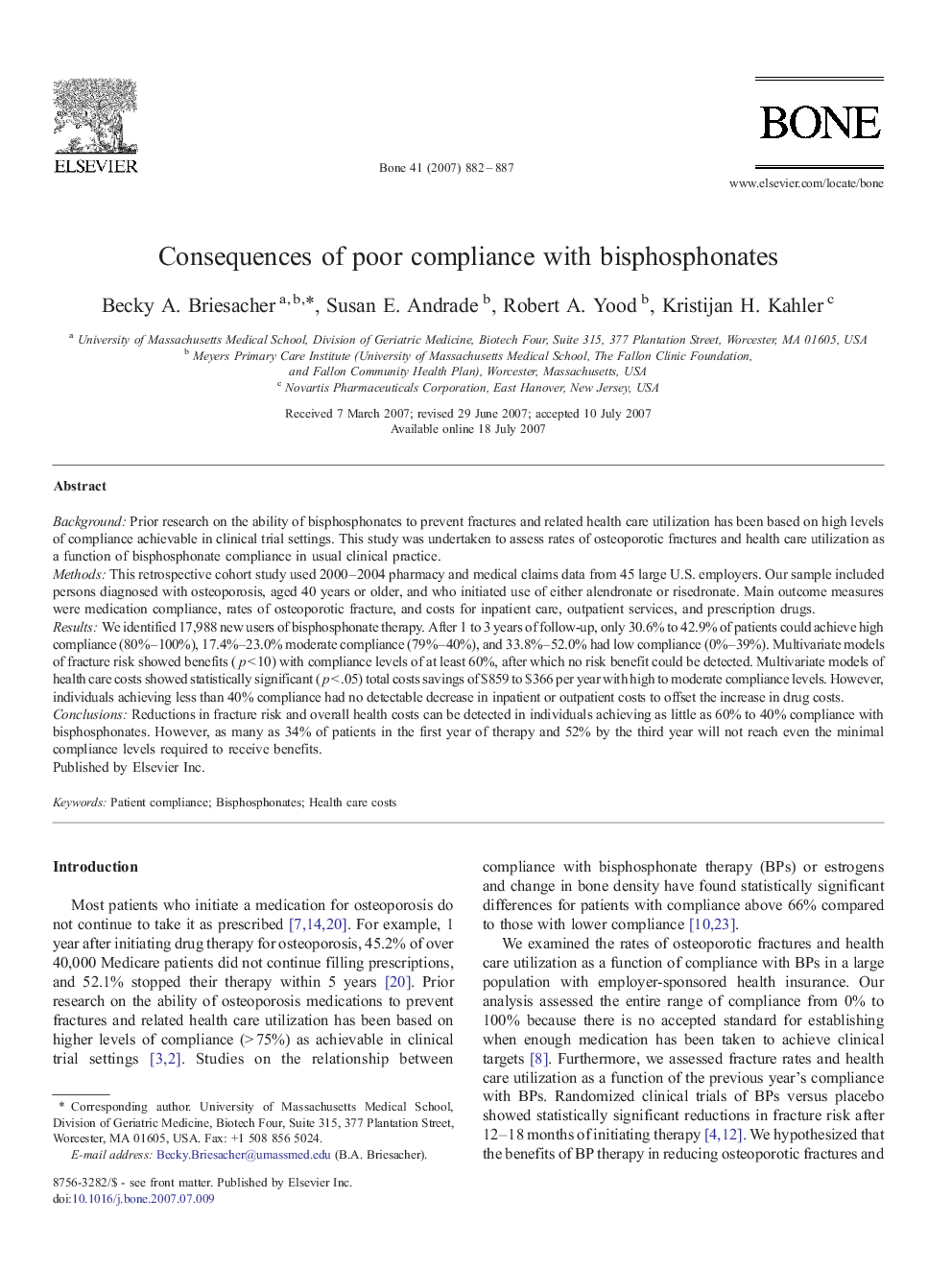| Article ID | Journal | Published Year | Pages | File Type |
|---|---|---|---|---|
| 2781506 | Bone | 2007 | 6 Pages |
BackgroundPrior research on the ability of bisphosphonates to prevent fractures and related health care utilization has been based on high levels of compliance achievable in clinical trial settings. This study was undertaken to assess rates of osteoporotic fractures and health care utilization as a function of bisphosphonate compliance in usual clinical practice.MethodsThis retrospective cohort study used 2000–2004 pharmacy and medical claims data from 45 large U.S. employers. Our sample included persons diagnosed with osteoporosis, aged 40 years or older, and who initiated use of either alendronate or risedronate. Main outcome measures were medication compliance, rates of osteoporotic fracture, and costs for inpatient care, outpatient services, and prescription drugs.ResultsWe identified 17,988 new users of bisphosphonate therapy. After 1 to 3 years of follow-up, only 30.6% to 42.9% of patients could achieve high compliance (80%–100%), 17.4%–23.0% moderate compliance (79%–40%), and 33.8%–52.0% had low compliance (0%–39%). Multivariate models of fracture risk showed benefits (p < 10) with compliance levels of at least 60%, after which no risk benefit could be detected. Multivariate models of health care costs showed statistically significant (p < .05) total costs savings of $859 to $366 per year with high to moderate compliance levels. However, individuals achieving less than 40% compliance had no detectable decrease in inpatient or outpatient costs to offset the increase in drug costs.ConclusionsReductions in fracture risk and overall health costs can be detected in individuals achieving as little as 60% to 40% compliance with bisphosphonates. However, as many as 34% of patients in the first year of therapy and 52% by the third year will not reach even the minimal compliance levels required to receive benefits.
